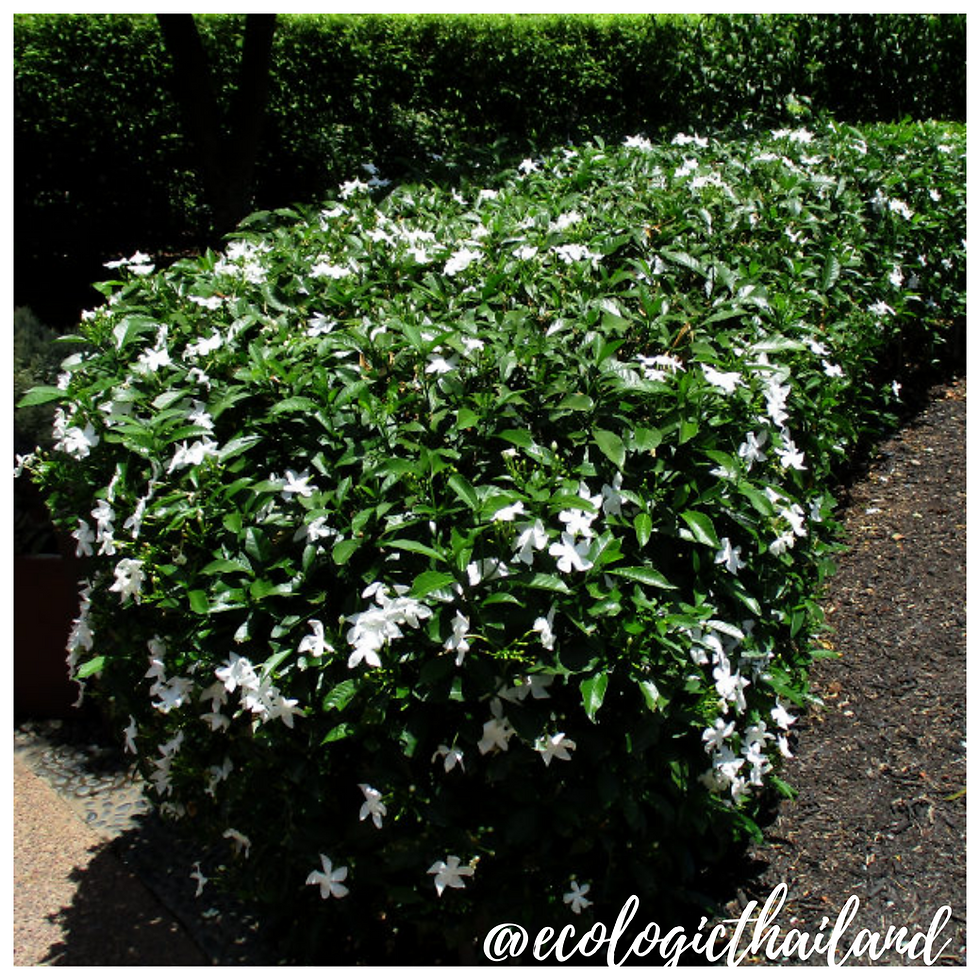Peruvian Lily
- Eco-Logic Resort
- Apr 14, 2021
- 2 min read
Mahalab | ว่านมหาลาภ | Eucrosia bicolor
Family: Amaryllidaceae - Genus: Eucrosia

The Peruvian Lily can be found in bloom, once a year, on several spots around the restaurant on the premises of Eco-Logic and TCDF,
The Peruvian Lily is a herbaceous, perennial and bulbous plants in the Amaryllis family and originate from South America. The name Eucrosia comes from the Greek eu, beautiful, and krossos, a fringe, referring to the long stamens.
The leaves are on long stalks and have elliptical or ovate blades, up to 25 centimeter wide; they may or may not be present when the flowers are produced. The flowers are growing in an umbrella shape of of 6–30 flowers, tubular at the base, green, yellow or red in color. The stamens hang downwards and have long filaments which form a cup containing nectar at the base. The flowers are adapted for butterfly pollination.
The Peruvian Lily blooms during the dry season, when the first rains start to fall in April and May.

THE PLANT
The Peruvian Lily is a herbaceous, perennial and bulbous plants in the Amaryllis family and originate from South America. The name Eucrosia comes from the Greek eu, beautiful, and krossos, a fringe, referring to the long stamens.

THE LEAVES
The leaves are on long stalks and have elliptical or ovate blades, up to 25 centimeter wide; they may or may not be present when the flowers are produced.

THE FLOWERS
The flowers are growing in an umbrella shape of of 6–30 flowers, tubular at the base, green, yellow or orange-red in color. The stamens hang downwards and have long filaments which form a cup containing nectar at the base. The flowers are adapted for butterfly pollination
CULINARY USES
No culinary use of the Peruvian Lily can be found.
TRADITIONAL MEDICINAL USE
NOTE: please take advice from a doctor if you are planning to use herbal medicine.
No medicinal use of the Peruvian Lily can be found.
INTO THE WILD: a down to earth experience

For guests and visitors to Paksong we organize weekly tours "The Edible Forest" and Foraging weekends: Into the Wild. We work with local guides to take you in the jungle of Paksong. After foraging, we will cook a meal with the ingredients, using bamboo together with you!
Come and join and learn about the abundance of food that nature gives us!
INTO THE WILD!


















Comments